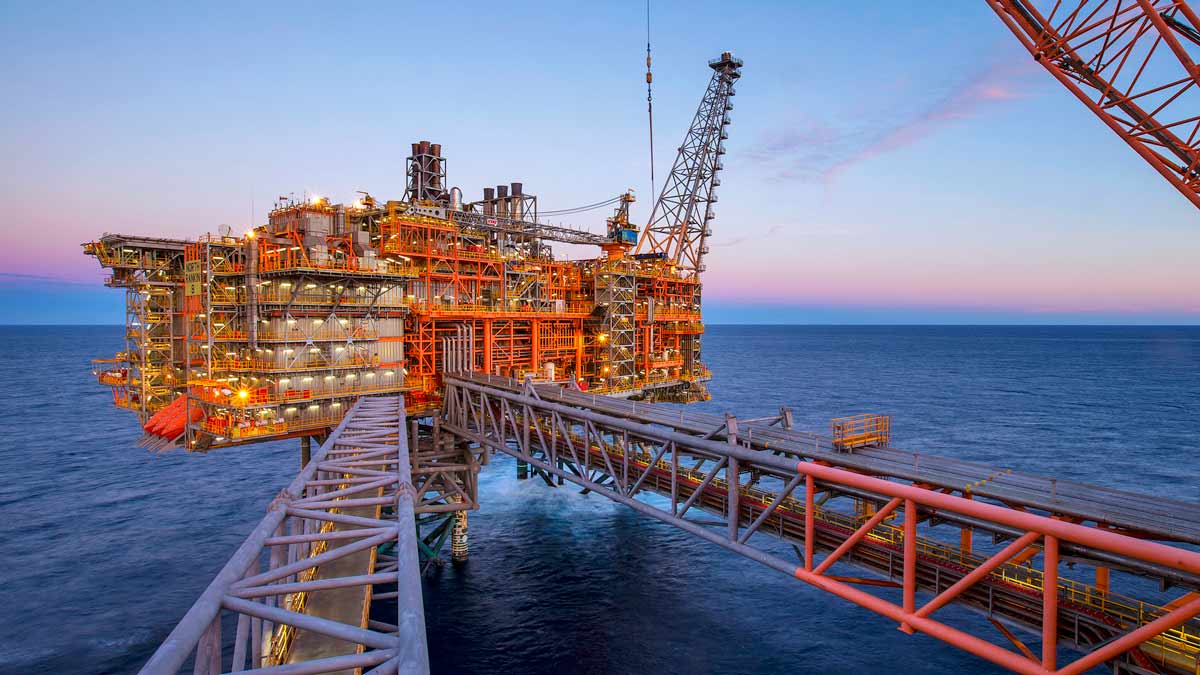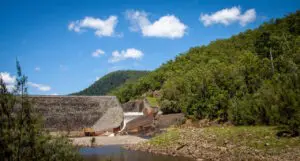Three of Australia’s big banks have come under pressure for their involvement in a massive new gas project, that critics say is inconsistent with their commitments to support global efforts to tackle climate change.
Last year, Woodside announced that it would sell a 49 per cent interest in its massive Pluto Train 2 LNG processing facility to Global Infrastructure Partners in a deal worth an estimated A$5 billion.
In return for the major stake, Global Infrastructure Partners is to cover 49 per cent of the estimated US$5.6 billion (A$7.8 billion) capital expenditure on the project as well as an additional US$835 million (A$1.16 billion) in construction costs.
To fund its commitments, the group has obtained a US$3.5 billion (A$4.87 billion) “club loan” with contributions from a range of major local and international banks.
This ‘club’ includes three of Australia’s largest banks; ANZ, Westpac and NAB.
Shareholder advocacy group, Market Forces, said the involvement of the big Australian banks in lending funds to Global Infrastructure Partners to support its participation in the Woodside project undermined pledges being made by the banks to align their investments and lending with climate change goals.
There has been growing pressure placed on major Australian banks and investors to align their investments with net zero emissions goals, with most announcing commitments to ensure their investments are consistent with the Paris Agreement or phase out their exposure to fossil fuel investments altogether.
Market Forces pointed to analysis that it says shows the development of new gas projects was incompatible with efforts to keep global warming within safer levels.
“The International Energy Agency (IEA) has made it clear there is no room for new fossil fuel supply projects if we are to achieve the goals of the Paris Climate Agreement,” Market Forces campaigner Jack Bertolus said.
“Yet, despite a clear commitment to net zero, NAB has just led a global banking consortium to enable a 1.6 billion tonne carbon bomb, with ANZ and Westpac as part of the deal.”
“The immensity of the fossil fuel project is matched only by the banks’ willingness to repeatedly con their customers and their investors, who are all demanding action on the climate crisis. In reality, their money is being used to fund a project enabling emissions equivalent to running 15 coal plants for three decades.”
The loan involved 18 lenders, including HSBC, Bank of China, MUFG, Societe Generale and Sumitomo.
A spokesperson for Westpac said the bank remained committed to supporting the Paris Agreement goals, and worked with oil and gas customers to ensure their business plans also aligned with the international climate agreement.
“Westpac supports a net zero economy by 2050 and was the first Australian bank to support the Paris Agreement in 2015,” the spokesperson told RenewEconomy.
“We will support our existing customers and work with them to ensure they have Paris aligned business strategies. We also expect any new oil and gas exploration, production and refining customers to have publicly disclosed Paris-aligned business goals.”
A spokesperson for NAB said the company also remained committed to net zero targets for 2050, and that it would gradually reduce the amount of its lending to fossil fuel projects.
“Climate action is everyone’s job. NAB wants to be part of the solution and we fully support net zero by 2050,” the NAB spokesperson said.
“NAB has set a cap on our Oil and Gas lending at US$2.4 billion [A$3.34 billion] and we are the first Australian bank to do so publicly and transparently. This cap will reduce from 2026 through to 2050, aligned to IEA NZE 2050.”
ANZ said that it had set a target to phase down its exposure to higher emissions electricity generation, and to increase its investments in clean energy projects, but had not ruled out new investments in gas projects.
“ANZ has a target to reduce the emissions intensity of its power generation lending portfolio by 50% by 2030, aligning lending with the Paris goals. We will report annually on our progress against this target,” an ANZ spokesperson said.
“We also have a target to fund and facilitate $50bn by 2025 to support our customers’ transition to a low carbon economy, which includes renewable energy, ‘green buildings’ and emerging technologies such as hydrogen.”
On Tuesday, Woodside confirmed that it had completed the sell-down of the Pluto Train 2 LNG project to Global Infrastructure Partners, with Woodside CEO Meg O’Neill saying the project was expected to operate for several decades.
“GIP brings established, global capabilities to the Pluto Train 2 Joint Venture which will support delivery of a world-class project,” O’Neill said.
“The development of Scarborough gas through Pluto Train 2 is expected to deliver significant value to our shareholders, create thousands of jobs and deliver energy to domestic and international customers for decades to come.”
Woodside has claimed the Scarborough project would help to reduce global emissions, citing analysis that suggests the gas deposit contains a low amount of carbon dioxide – but most of the emissions associated with the project will be released through the combustion of the gas itself.
Woodside’s decision to progress with the Pluto Train 2 project, which will see the LNG processing facility constructed alongside the development of the massive Scarborough gas field, has been slammed by environmental groups who say the project represents a significant expansion of fossil fuel extraction at a time when action to cut greenhouse gas emissions is becoming increasingly vital.
Analysis undertaken by The Australia Institute and the Conservation Council of Western Australia estimated that the Scarborough and Pluto LNG developments could see enough gas extracted to lead to more than 1.7 billion tonnes of carbon dioxide equivalent emissions released over the lifetime of the project – more than the Adani Carmichael coal mine.
Woodside is currently in the process of merging its business with the oil and gas arm of resources giant BHP, which will see Woodside become the largest energy company listed on the ASX with a total value of more than $41 billion.










